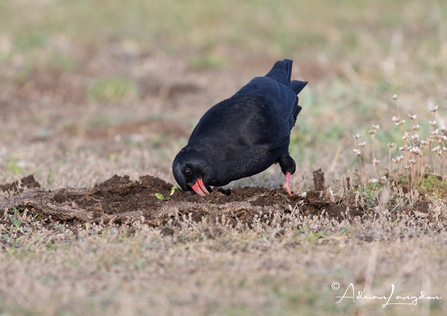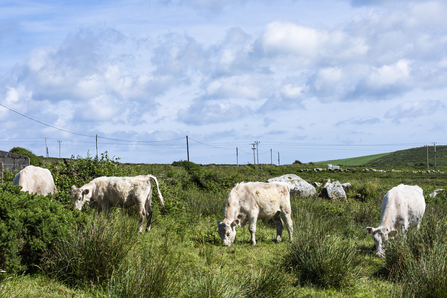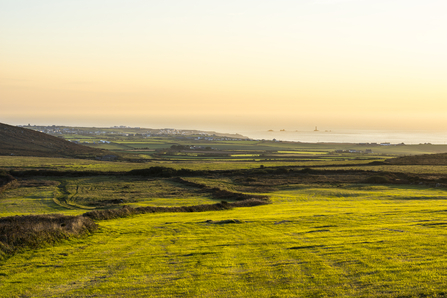Since going completely extinct in Cornwall during the mid-20th century, it wasn’t until 2001 that a small group of three birds arrived on the Lizard and took up residence. Two of these birds formed a pair and produced three young in 2002, the first choughs to be hatched in the wild in Cornwall in over 50 years. Since then, conservationists have been working hard to protect these birds and give them the best chance to flourish in Cornwall again.
As suitable habitats are restored, particularly through carefully managed grazing, chough numbers have been increasing along Cornwall’s coastline. However, it is only recently that Cornwall Wildlife Trust have received reports of choughs being seen on a daily basis on their Penwith inland natures reserves Bartinney and Bostraze.
Cornwall Wildlife Trust’s West Cornwall Reserves Manager Nick Marriott said:
“For choughs to be coming inland to our reserves is a first – and really exciting, as it shows how well they are doing. Their presence reflects the richness of our nature reserves for wildlife.
“The choughs have been regularly spotted feeding in the pastures. We know from surveys that these grasslands are particularly rich in dung beetles which in turn feed on the cow pats at both our Bartinney and Bostraze Reserves.
“At these reserves, we practice conservation grazing, which is the use of livestock where the primary objective is to manage a site for wildlife, meaning the cattle are free to roam and have a natural, organic diet free from wormers, which enables the dung beetles to thrive.”



